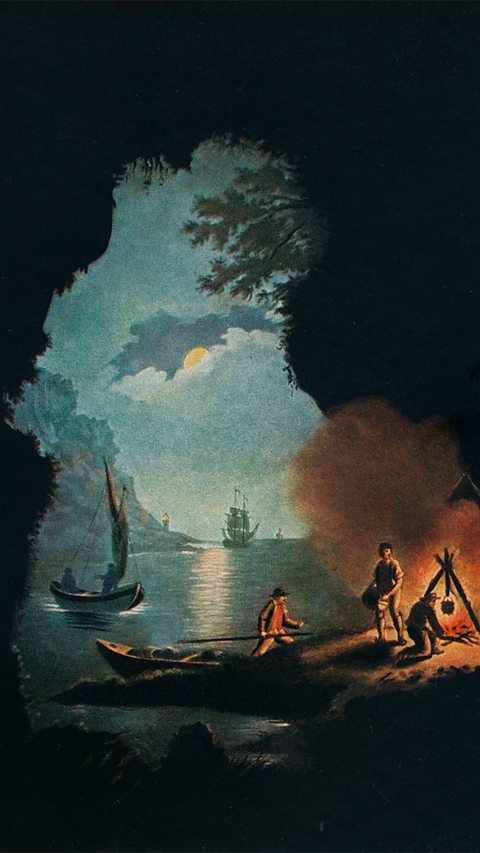Smuggling in the 18th century
Minor theft and, to a lesser extent, violent crime continued to be the main crimes committed in the 18th century. However, the start of the Industrial Revolution led to new crimes associated with the new forms of trade and transport. As these changes happened, lawmakers passed laws against the emerging new crimes of smuggling and highway robbery.

Smuggling is the illegal trade in goods to avoid paying customs duties and taxation (tax/taxes)Money collected by a government.. The 18th century was known as the golden age of smuggling.
It was usually organised by gangs who were funded by investors or venturers. They chose secluded parts of the coastline to land cargos from ships. There were many suitable areas along the south coast of England and west Wales, including small coves and river estuaries.
The main items smuggled in the 18th century were tea, wine, spirits and lace. In 1784 the Prime Minister, William Pitt the Younger, suggested that of the 13 million pounds (weight) of tea consumed in Britain, only 5.5 million had been brought in legally.
Smuggling gangs
Smuggling gangs were often 50-100 people, each with a specific role.
- A Spotsman would direct the ship to the shore.
- A Lander would arrange the unloading of the cargo.
- A Tubsman carried the goods.
- A Batsman protected the Tubsman.
Gangs would have to be watchful for officers from HM Customs. The coastline was divided into 33 areas, each with teams of preventative officers, whose job it was to prevent smuggling, or catch the smugglers.
However, there were insufficient officers to patrol the whole coastline and many smugglers were never caught. Those that were caught were often not convicted, as few people would testify against the gangs because they threatened people to keep quiet.
Smuggling in Wales
- Smuggling in salt was common between New Quay and Fishguard. Smugglers clashed violently with customs officers in 1704.
- Smugglers such as Henry Morgan traded on Caldey Island, just off the coast at Tenby.
- Skomer and Skokholm islands acted as centres for smugglers. Manorbier, Solva and St Brides Bay were centres of smuggling.
- Many areas of Pembrokeshire’s coast have names linked with smuggling, for example Ogof Wisgi (Whisky Cave).
- One of the most famous Pembrokeshire pirates was Black Bart (Bartholomew Roberts).
- William Owen smuggled brandy and salt from the Isle of Man to Cardigan Bay and the LlŇ∑n Peninsula in the 1720s and 1730s. He was caught and executed in 1747.
- Si√īn Cwilt led a smuggling gang along the Ceredigion coast and was never caught.
- Wines, silks and spirits were smuggled at Barmouth.
- Brandy Cove on the Gower Peninsula was used by William Arthur and his gang to smuggle brandy.
The decline of smuggling
Smugglers were often executed as a deterrent to others. However, as so few were caught it did not stop the problem of smuggling.
When the Government reduced tax on tea and other goods in the late 18th and early 19th centuries, smuggling declined as it was no longer so profitable.
Watchtowers were also built along the south coast of England to protect against French invasion. These watchtowers made it far more likely that smugglers would be caught. The creation of the Coast Guard in the 1820s also led to fewer opportunities for smugglers.